If you’ve ever been shooting a semi-auto handgun and heard a “click” instead of a “bang,” one of two things probably happened: you panicked, or you confidently went into the clearing process that you’ve played over in your mind or practiced during training. Now, if you’ve never heard the “click,” just wait. Eventually, it will happen, so you should train your mind and body for the inevitable by learning to recognize and clear semi-auto handgun malfunctions.
Using dummy rounds and my Springfield Armory Hellcat Pro, I staged handgun malfunction photos so readers can recognize ssimilar situations with their own handguns.
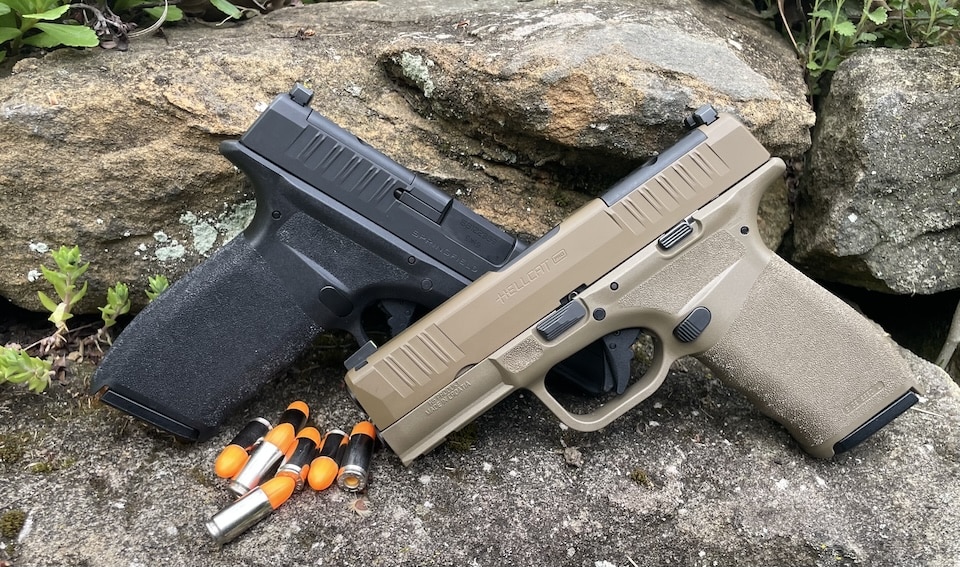
Misfire/Failure to Fire
A misfire occurs when the firing pin hits the cartridge, but the gun doesn’t fire. The leading causes for this malfunction are a bad primer caused by an indentation or blemish, riding the slide forward (causing the gun not to go entirely into battery), light/wrong/worn/broken springs, a bad firing pin or carbon buildup in the working parts of the gun.
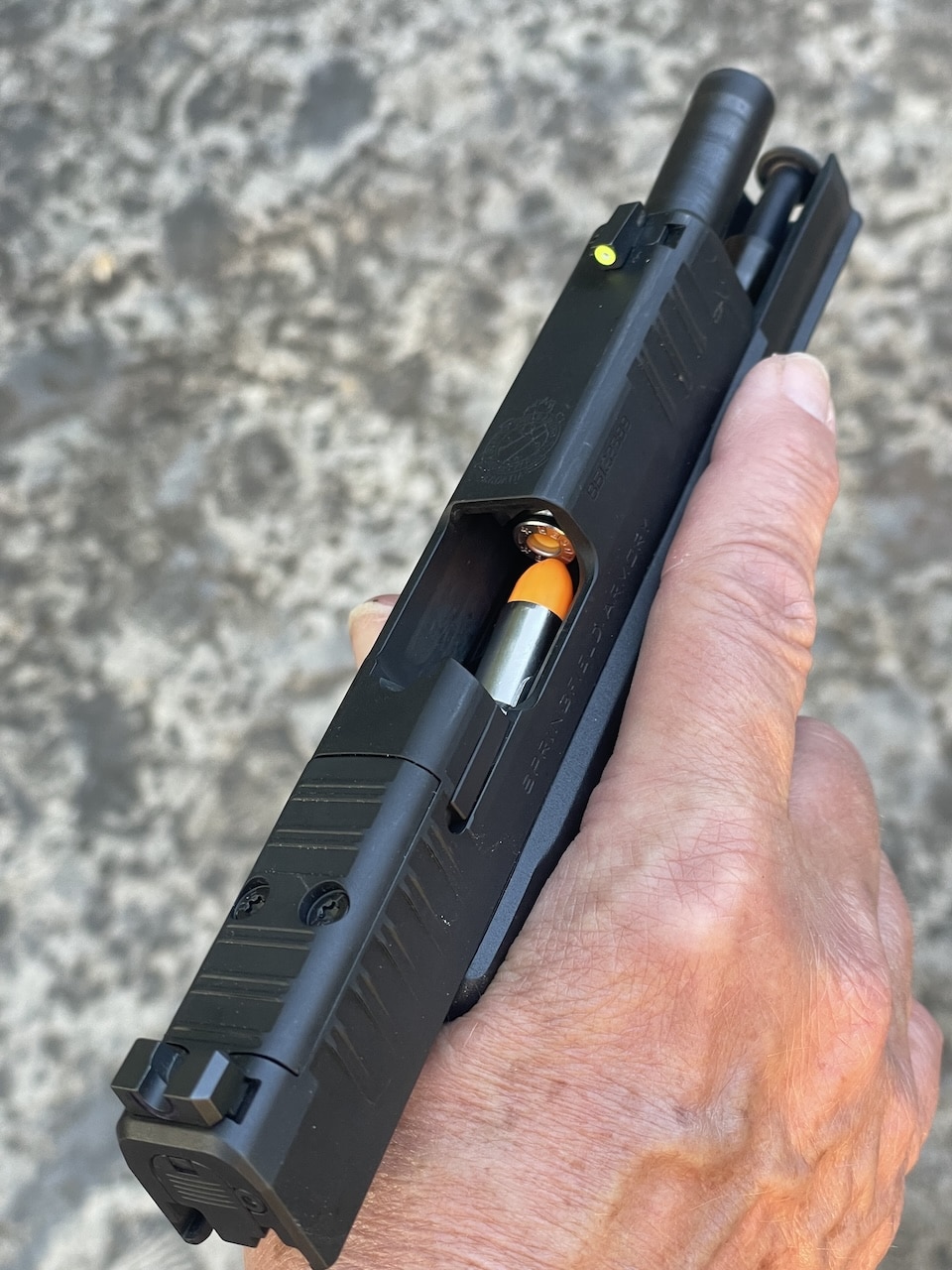
Double Feed/Failure to Extract
This can occur when the casing from a fired round doesn’t fully eject, and two rounds try to get into the chamber at the same time. If you look at your gun and see the slide partially locked open with a shell casing in the chamber and another round trying to force its way into the same space, you have a double feed. There are many possible causes for a double feed: the ammunition, an improperly seated magazine, a dirty chamber or a faulty magazine spring.
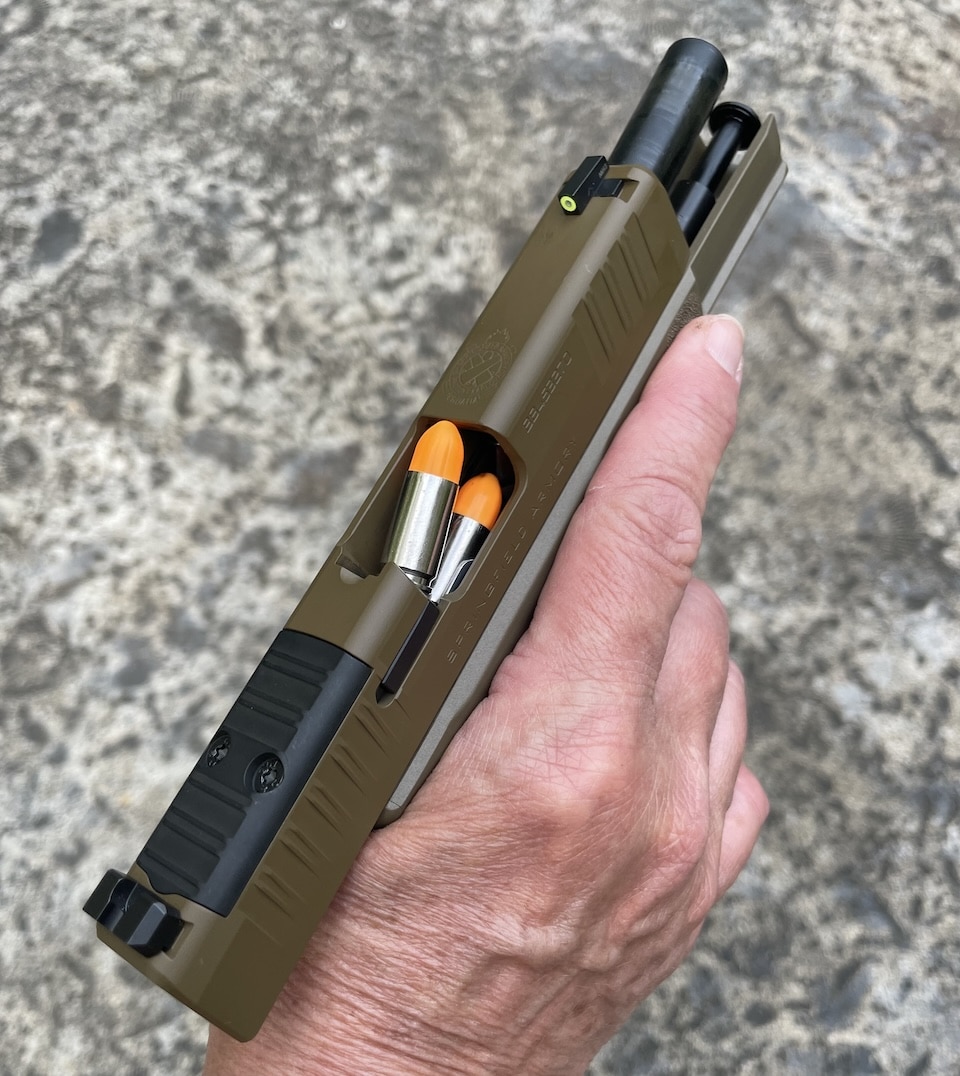
Failure to Feed/Tip Up
This type of malfunction happens when the round feeding from the magazine fails to enter the chamber. As with a double feed, the slide is partially open, but the tip of the round is exposed. Some possible causes for a failure to feed are faulty cartridges, weak magazine springs, damaged magazines, improperly seated magazines or dirty chambers.
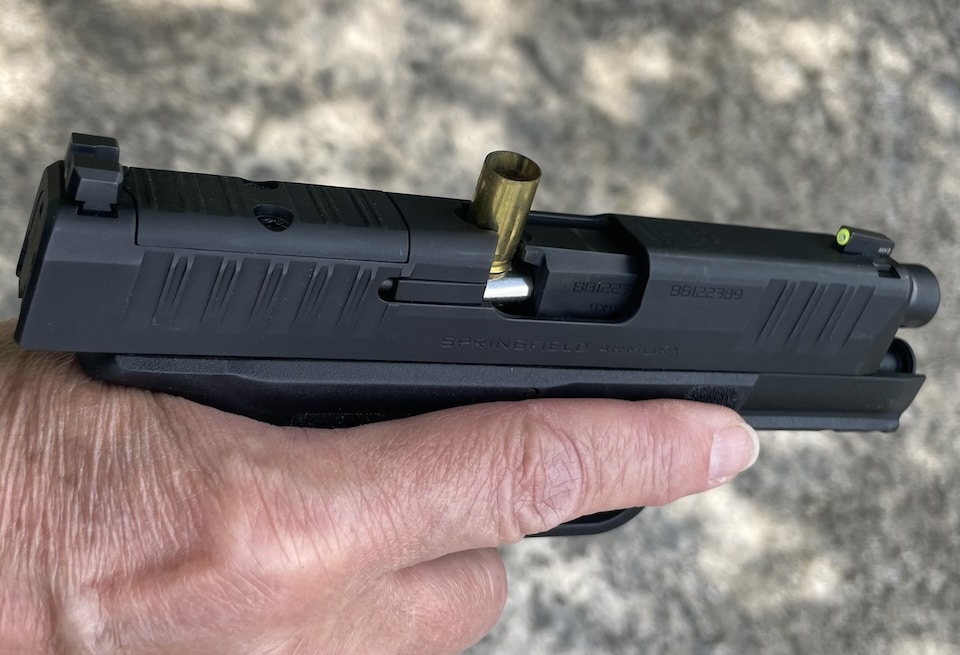
Failure-to-Eject/Stovepipe
A failure-to-eject occurs when a fired ammunition case becomes trapped in the ejection port. When you look at your gun, a portion of the case will be portruding out of the ejection port (hence the common term for this malfunction, a “stovepipe”). When this happens, another round cannot feed into the chamber until the casing is removed. Possible causes for this malfunction include underpowered ammunition, a dirty chamber, an improperly lubricated gun or a weak recoil spring. Failing to properly manage recoil by holding the pistol incorrectly (aka, limp-wristing) is a common cause, though.
Your first response to any “click” and not a “bang” should be a tap/rack process. This should clear most misfires and failures to eject.
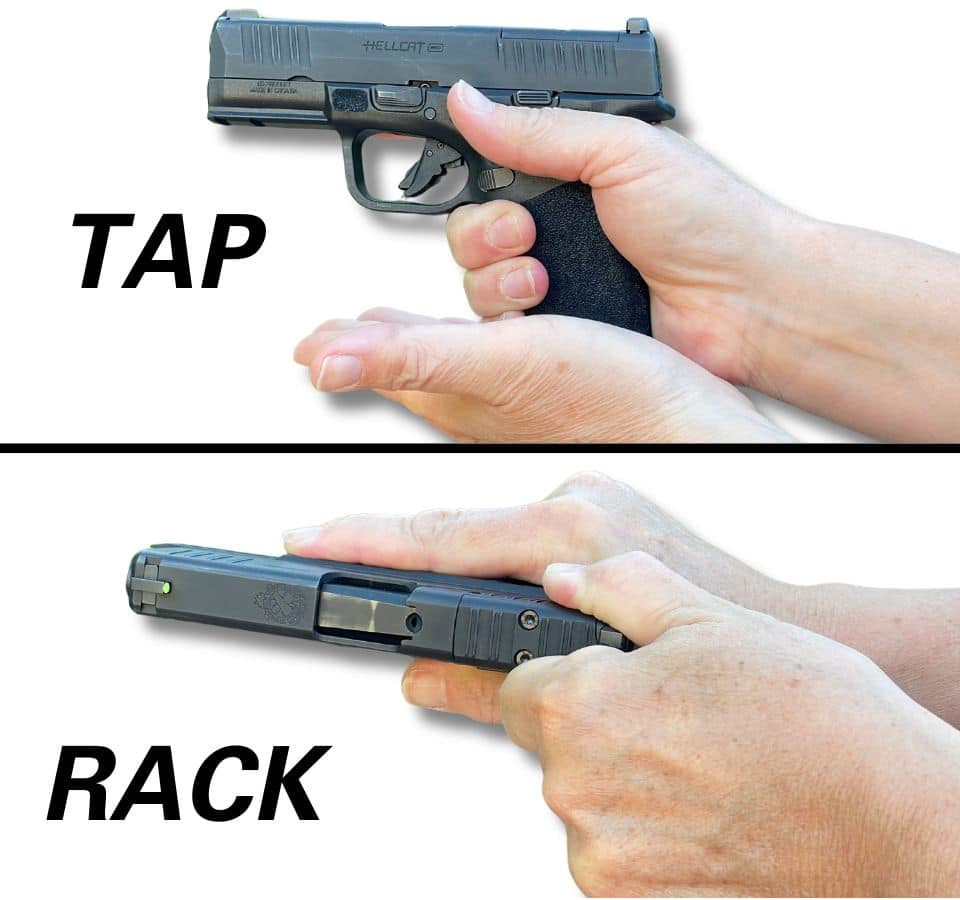
Tap, Rack, Reassess
If this doesn’t clear the malfunction, perform the following technique to solve a double feed.
Lock it open, Clear it, Reload
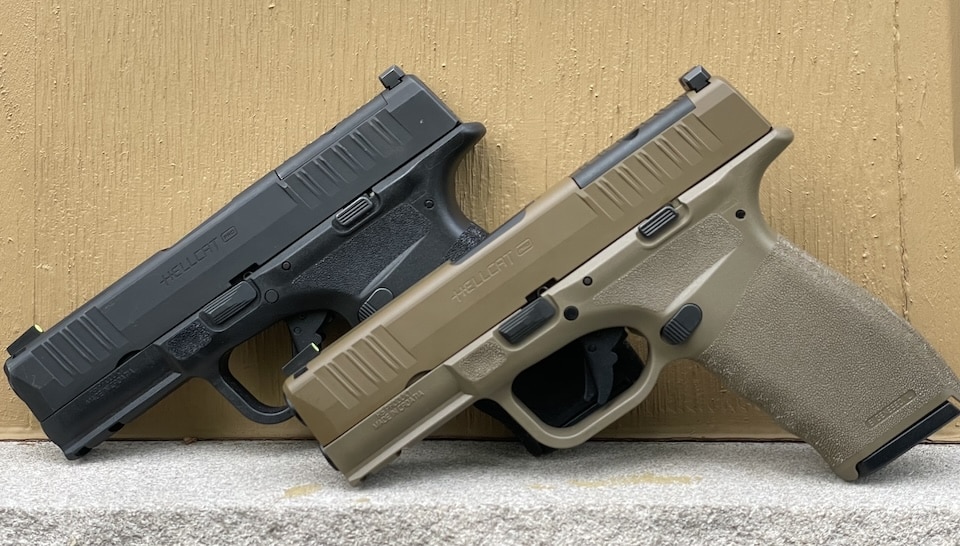
When you encounter a handgun malfunction, don’t panic. Keep your gun pointed in a safe direction. Learn how to recognize and clear the various handgun malfunctions on autopilot to get your gun back into action.
If you are on a range, and need help, raise your hand so that the range master or safety officer can see you. Keep the firearm pointed downrange.
Learn more about Springfield Armory’s Hellcat Pro here.
Michelle Cerino, aka Princess Gunslinger, first entered the firearms industry in 2011 as co-owner, president and trainer at a national training company. She immediately began competing in both 3-Gun and NRA Action Pistol, becoming a sponsored shooter. Michelle is currently a columnist and Managing Editor of Women’s Outdoor News, as well as owner of Pervenio LLC. She also manages social media for Vera Koo and FASTER Saves Lives. Michelle encourages others to step out of the comforts of home and explore. View all posts by Michelle Cerino